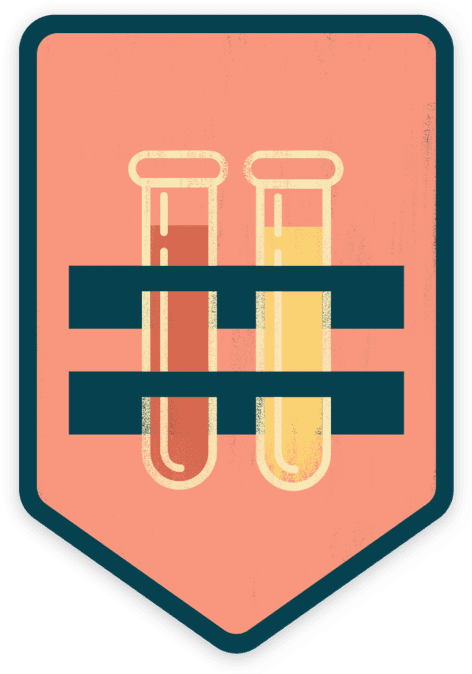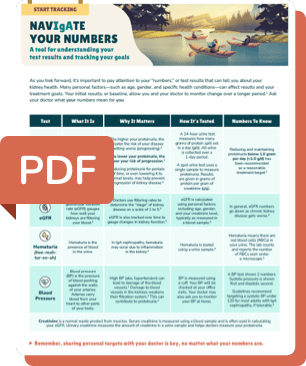Think you may have IgA nephropathy?
Nephrologists aren’t sure of all the causes of IgA nephropathy, but some people are at higher risk than others.1
Nephrologists generally group IgA nephropathy into 2 categories2:
Kidney doctors
- Primary IgA nephropathy is not caused by another known condition3
- Secondary IgA nephropathy is caused by another medical condition like gastrointestinal or liver diseases, or infections like HIV or hepatitis2,4
So, if many people don't have symptoms at first, how do you get diagnosed?1,5

Get tested.
40% of people living with IgA nephropathy have no recognizable symptoms when their disease is first suspected.5 But even without symptoms, possible kidney issues may be identified through urine tests during a routine medical exam.1
After these tests are evaluated by your doctor, you may be referred to a nephrologist to learn more about your kidney health. This could involve blood and urine tests to measure your kidney function or imaging tests to check your kidney’s shape and structure.6 Depending on your results, your nephrologist may suspect IgA nephropathy or another kidney disease.
Kidney doctor
The only way to accurately confirm IgA nephropathy is through a kidney biopsy.5,6
During this procedure, a doctor will remove a small sample of kidney cells with a needle and examine it under a microscope.6
Once your doctor confirms you have IgA nephropathy, they can work with you to create a personalized treatment plan to help lower your risk of disease progression (getting worse). By continuing to monitor certain test results, the two of you can keep better track of your kidney function over time and adjust your treatment plan as needed.
Track ongoing test results
This tool can help you discuss and track important test results, like proteinuria, eGFR, and blood pressure with your doctor.
Increased level of protein spills into urine
estimated glomerular filtration rate

Care partners & IgA nephropathy
People who are going through an IgA nephropathy diagnosis often need support from their loved ones. As a loved one, your most important task is being there for them. Take them to an appointment. Help them with grocery shopping. Have an informed conversation. Listen.
The burden of living with IgA nephropathy may be hard to understand, but whatever support you’re able to provide goes a long way.
Because no one should have to navigate IgA nephropathy alone.
Caring for someone with IgA nephropathy?
Review this brochure to help you prepare for conversations and set health expectations for the person you’re caring for.

Talking with your doctor
An IgA nephropathy diagnosis can bring up a lot of difficult feelings. But remember, you’re not alone.
There are support groups made by and for other people living with IgA nephropathy, as well as organizations and advocacy groups available to help you throughout your journey.
Most importantly, you have your nephrologist. Together, you can come up with a treatment plan and chart a positive path forward.
Kidney doctor
Partner with your doctor
Use this guide to help you have proactive conversations with your doctor and monitor your kidney health, together.


Set kidney
health goals
Thank You!
Your submission has been sent.
You will be hearing from us shortly.

References
1. Mayo Clinic. IgA nephropathy (Berger's disease). Accessed August 2023. https://



